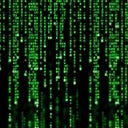Nurturing Critical Thinking Skills
As schools reopen and students return to the face-to-face learning, it is a good time to review the skills that will prepare students for the real world. One key skill that is essential in today’s world is critical thinking. Critical thinking skills are important because they enable students “to deal effectively with social, scientific, and practical problems”. Students who can think critically are able to solve a variety of wider problems more effectively. The material in this blog will examine ways to improve critical thinking skills in our education system.
What is Critical Thinking?
“Critical thinking includes the ability to identify the main elements and assumptions of an argument and the relationships between them, as well as drawing conclusions based on the information that is available, evaluating evidence, and self-correcting, among others. It is seen as a self-regulated process that comes from developing skills such as interpretation, analysis, evaluation and explanation; and goes beyond technical skills”.
Unfortunately, this tends to not be the focus of the Saint Lucian education system which instead highlights memorization and rote learning. However, critical thinking is a key component for many international private schools that are beyond the reach of most Saint Lucians. “It promotes curiosity and critical thinking, provides for regular assessments and feedback against standardized criteria, and has been shown to improve students’ performance, and provide unmatched preparation for university studies.”
Critical thinking activities at schools should ideally include four elements:
· Ill-structured problems
· Criteria for assessing thinking
· Student assessment of thinking
· Improvement of thinking
Ill-structured problems are questions, case studies, or scenarios that do not have a definite right or wrong answer and would include debatable issues that require “reflective judgment.” For example, asking students to evaluate comparable websites, such as 1st National Bank and Bank of Saint Lucia would require students to think about the content of the websites, formatting used, and their marketability. There is no right or wrong answers if the student’s choice is supported by logical reasoning.
The second element, criteria for assessing thinking, provides students with a framework for their thinking and questions such as the following:
· Why do you think Bank of Saint Lucia’s navigational menus are easier to use than 1st National Bank?
· Why do you like one’s color scheme over the other?
· What is your perspective based upon?
· What additional information would you want to see on the websites?
The teacher should then provide students with individualized feedback based on their responses. This would allow them to address specific criteria upon which they can assess student’s thinking. If instructors model the criteria for assessing thinking and provide a framework then students will eventually apply these techniques on their own. Finally, the process concludes with improvement of thinking. By creating a culture of inquiry where students can contemplate about their thinking processes and practice logical constructs, students will become more willing to reconsider and revise their thinking. Another example is the McKinsey consulting interview process and their problem solving game and FAQ
IDEALS Framework
Many students are accustomed to being passive learners by merely memorizing and recalling information. This form of learning can make it very challenging for them to engage them in active learning situations that require critical thinking skills. Teachers should try to guide students and create a learning environment where students feel comfortable thinking through an answer rather than simply having an answer. This can include coaching techniques which can engage students in active learning and critical thinking opportunities including the IDEALS framework.
· I — Identify the Problem: What is the real question we are facing?
· D — Define the Context: What are the facts that frame this problem?
· E — Enumerate the Choices: What are plausible options?
· A — Analyze Options: What is the best course of action?
· L — List Reasons Explicitly: Why is this the best course of action?
· S — Self-Correct: Look at it again … What did we miss?
This problem-solving technique will guide students through the critical thinking process and allow them to be more productive citizens. It is important for our leaders to use critical thinking skills to make decisions that truly benefit Saint Lucians and stop making costly decisions that will be a burden to Saint Lucian tax payers.
Please reach out to stlucia.analyser@gmail.com with any suggested topics for future articles or if you would like to help write or edit our blogposts. Like or Follow our Facebook Page or at Medium or Twitter or YouTube.
